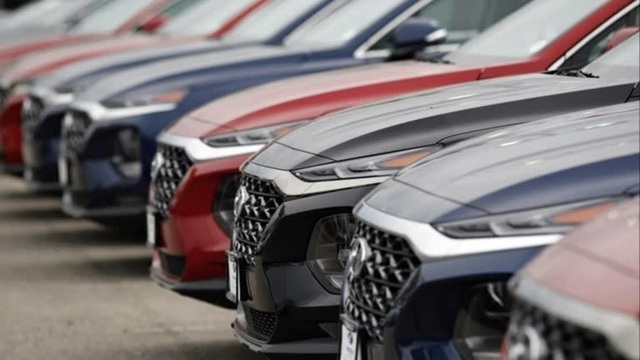Vietnamese rush to buy cars as prices fall
Though the automobile market has become big enough for manufacturers to step up domestic production, industry policies remain unencouraging.
With 300,000 cars sold in 2020, Vietnam has surpassed the Philippines to become the fourth largest automobile market in the region, according to AAF (ASEAN Automotive Federation).
Thailand led the region with 792,146 cars sold in 2020, while Indonesia was in the second position with 600,000 cars sold. The third position belonged to Malaysia with 550,000 cars. The figures were 296,634 for Vietnam and 223,793 for the Philippines.
The AAF report was prepared based on figures from the Vietnam Automobile Manufacturer Association (VAMA). It did not count Hyundai and VinFast cars sold in Vietnam. If the cars of the two brands are counted, the figure would be over 400,000 products.
The Covid-19 pandemic has had a big impact on the entire world market and caused sales in Southeast Asia to decrease sharply.
However, the effects to the Vietnamese market were insignificant. Since the government of Vietnam decided to reduce the vehicle registration tax by 50 percent, the car sales only slightly decreased, which helped Vietnam become the fourth largest automobile market in the region.
Analysts predict that Vietnam will surpass Malaysia in the future to jump to the third position.
In general, the development of the automobile market depends on three factors – scale and population structure; the average income per capita; and average number of cars per 1,000 people.
In Vietnam, motorization begins when the average GDP per capita reaches $3,000 per annum. The average number of cars per 1,000 people is still low, while the middle class, or the major clients of personal cars, is expanding rapidly.
In a report released recently, SSI commented that Vietnam’s automobile market is now large enough to step up domestic manufacturing.
Six manufacturers hold 90 percent of the market, including Truong Hai, TC Motor, VinFast, Toyota, Mitsubishi, Ford and Honda which sells 30,000-80,000 cars a year, which has exceeded the breakeven point (30,000-40,000 cars a year for a factory with capacity of 10,000-20,000 cars a year for each model).
Vietnam has also surpassed the Philippines in terms of domestic output. Vietnam’s automobile industry is in a situation similar to the Philippines, with a low localization ratio, low output and pressure from imports which enjoy a preferential tariff of zero percent.
| Six manufacturers hold 90 percent of the market, including Truong Hai, TC Motor, VinFast, Toyota, Mitsubishi, Ford and Honda which sells 30,000-80,000 cars a year, which has exceeded the breakeven point (30,000-40,000 cars a year for a factory with capacity of 10,000-20,000 cars a year for each model). |
However, enterprises in Vietnam have still increased their investments to assemble cars domestically, while enterprises in the Philippines don’t.
Car prices fall
In 2020, Ford Vietnam spent VND1.9 trillion to increase the capacity of its factory to 40,000 products a year. Meanwhile, Thanh Cong Group and Hyundai spent VND3.2 trillion on the new factory with the capacity of 100,000 products per annum.
A lot of other manufacturing and assembly projects of Honda, Toyota, Mitsubishi and Suzuki are going o be implemented. Vingroup has announced the issuance of VND1 trillion worth of bonds to raise funds for VinFast to speed up its automobile manufacturing activities.
With automobile manufacturing projects expected to be completed by 2022-2023, the Vietnam’s automobile market is expected to be busy. Manufacturers will have to compete with each other to boost sales by offering attractive discounts, which will lead to car price decreases.
A Fitch Solutions’ report on the attractiveness of countries to automobile manufacturers showed that Vietnam ranks 10th with 44.5 scores in Asia (Thailand ranks 4th, Malaysia 5th, Indonesia 8th and the Philippines 9th).
Despite having scores lower than other regional countries, Vietnam is still an attractive destination for automobile part manufacturers thanks to its membership of many FTAs and low production costs.
Regarding the attractiveness of the markets, Fitch Solutions believe that Thailand, Vietnam and Malaysia are the most attractive automobile retail market among Asian emerging markets. It predicts a 6.5 percent growth rate for Vietnam for the next five years.
Pham Chi Lan, a respected economist, commented that thanks to the great efforts by enterprises, the market attractiveness and changes in policies, the automobile market has gained some prosperity.
She said that if Vietnam wants to reap fruit from the industry, it needs to have more practical policies. It could sacrifice the benefits from luxury tax as has been done by many countries to develop the auto market. Vietnam is still lagging behind other countries in terms of policies to develop the auto industry.
As the third most populous country in Southeast Asia, and having increasingly high income, Vietnam still has the lowest percentage of personal car ownership in the region.
Vietnam is striving to become a higher average income country by 2030 and high income country by 2045. If so, cars will be a common means of transport.
VAMA believes that if the policies to encourage the automobile industry development are strong enough, they will help increase the market capacity, thus reducing the production cost.
The association has proposed offering investment incentives in order to increase the output of some product lines, as Thailand did, focusing on pick-ups in the past.
Tran Thuy
Source: https://vietnamnet.vn/en/feature/vietnamese-rush-to-buy-cars-as-prices-fall-717254.html


 Thailand
Thailand




